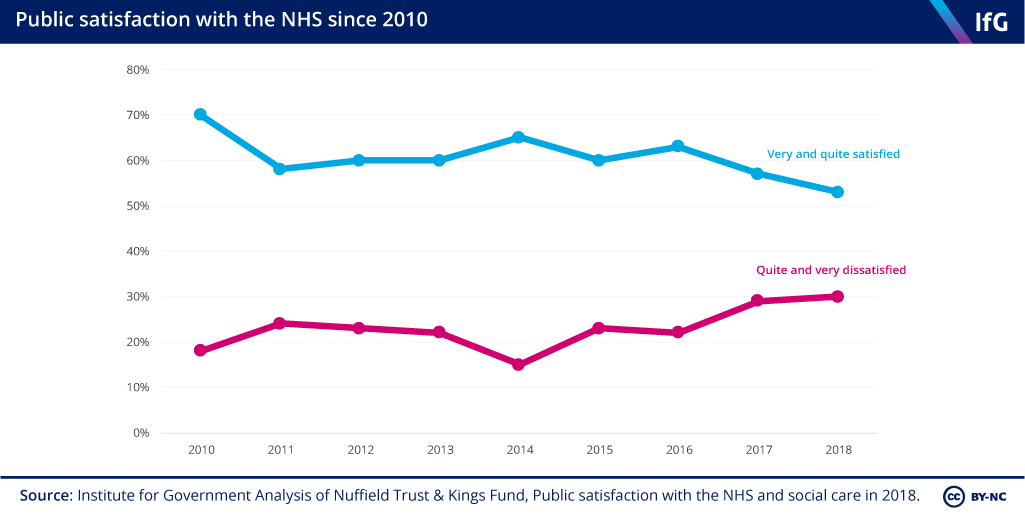The NHS waiting times target review highlights the pressures facing public services
The Government must take its lead from the NHS and make clear the trade-offs that it will have to make with public services.
The Government must take its lead from the NHS and make clear the trade-offs that it will have to make with public services, writes Chris McNulty.
NHS England has published the first report of the Clinical Standards Review, which recommended piloting new targets for cancer and mental health services. This includes replacing the Government’s four-hour A&E waiting time target pledge with five new measures.
The proposals are controversial, but the largest A&E departments have not met their A&E waiting time targets since July 2013. The review was in part driven by the reality that hospitals cannot meet existing targets with current spending.
This will not be an isolated example of the adjustments which will be made to public services. If the Government sticks to the spending envelope outlined in the last Budget, all public services will face these kinds of difficult choices over the next five years. Our Performance Tracker – produced in partnership with the Chartered Institute of Public Finance and Accountancy – shows that the Government will struggle to provide the same scope and quality of services to a growing population within a shrinking budget.
The NHS funding settlement implied trade-offs
Last summer, the Prime Minister announced an additional 3.4% annual funding increase for the NHS over the next five years. Independent analysis from the Institute for Fiscal Studies and The Health Foundation shows that this is enough to maintain current levels of service provision – but not much more. The additional commitments to improve care made in the NHS long-term plan – from speeding up cancer diagnosis to expanding mental health services for children – will not be achievable without making more efficiencies.
After eight years of spending constraint, many of the easy efficiencies have been realised. The long-term plan is not clear about how the NHS would achieve its promised productivity improvements, with vague plans to use new technology and integrate services potentially increasing rather than reducing short-run costs.
On current proposals, the efficiencies likely to be achieved will not be enough to allow the NHS to deliver improvements in care. That is why trade-offs – like easing the A&E waiting time target – are necessary.
The Government has not been clear about trade-offs in public services
The proposals to change the waiting times target have been announced by NHS England rather than by the Government. Yesterday’s publication shows that service providers will have to make tough decisions even if the Government refuses to be explicit about the trade-offs that need to be taken.
But the Government must manage public expectations. Public satisfaction with the NHS is at its lowest level since 2007, and access to services is the public’s chief concern. Failing to manage expectations only makes tough decisions – whether reduced scope or increasing taxes or charges – harder.

NHS England has been criticised for moving the goalposts. But the Government’s failure to spell out the trade-offs necessary to deliver the additional commitments in the NHS long-term plan has left it little choice.
The Government must use the Spending Review to set out its vision for public services
NHS waiting times are not the only choice the Government faces. A range of indicators of public service performance – from the timeliness of child protection visits, to victim confidence in the police, and prison violence – have deteriorated since 2010, and providers of these services face similarly difficult choices to NHS leaders.
On current plans, the 2019 Spending Review will mean real-terms cuts to departments other than health, defence, and international aid.
The Government must, therefore, set out its priorities for public services beyond the NHS. The clearer it is about its agenda, the easier it will be to justify the difficult choices it needs to make: whether tax increases, lower expectations of services, more individual contributions, or radical service change. Failure to do so will erode trust, both in the Government and in public service providers.
- Supporting document
- Performance Tracker 2018 web.pdf (PDF, 2.02 MB)
- Topic
- Public services
- Publisher
- Institute for Government